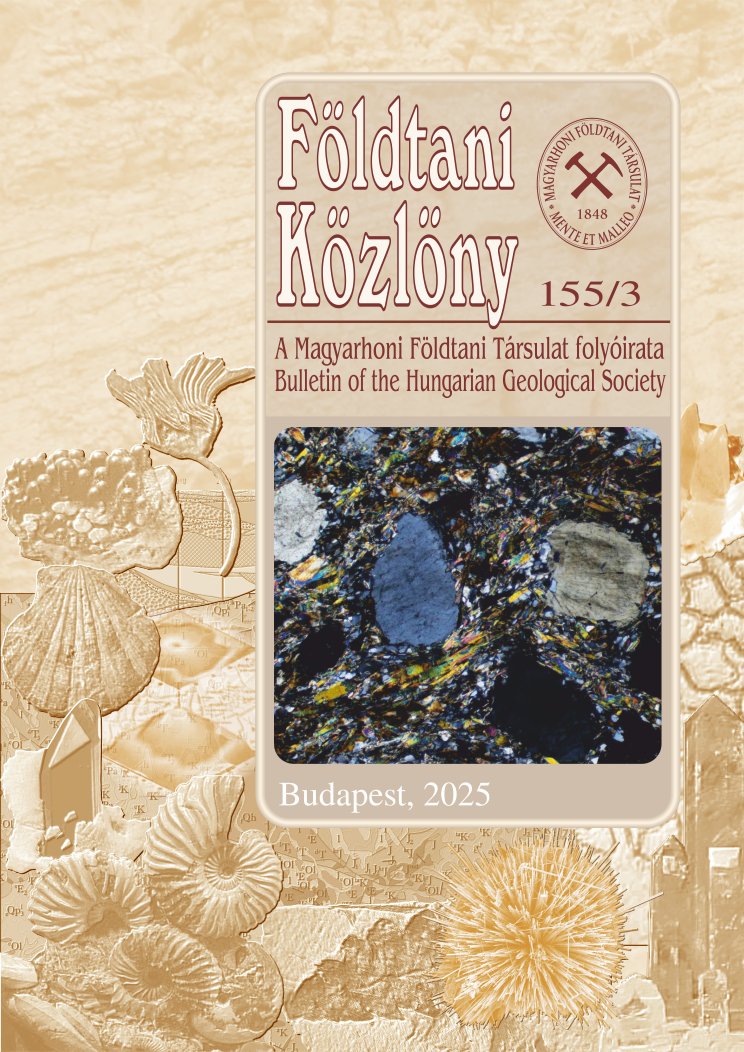Traces of hydrocarbon migration near Pécsvárad (Mecsek Mts)
Abstract
Research carried out over recent few years has revealed that a part of the Hosszúhetény Calcareous Marl Formation
(HCMF) contains mature organic matter (total organic carbon content [TOC] = 0.4%) (RAUCSIK et al. 2002). During
earlier fieldwork, numerous calcite veins were discovered in an outcrop of the HCMF near Pécsvárad (SW Hungary); this
has an intense odour, like that of bitumen. Based on the myriad of petroleum inclusions of the fracture-filling calcite, it
could be proved that in the past the fracture system acted as a migration pathway for petroleum-bearing fluids.
The aims of the present study were to determine the type of organic matter in the marl — and its stage of maturity —
by vitrinite reflectance measurements. The purpose of this was to verify whether the HCMF could have been the source
rock of the oil which was trapped in the fluid inclusions of the vein-filling calcite. It also served to study the fluids trapped
in the inclusions by applying the methods of fluid inclusion petrography, microthermometry and UV-fluorescence
microspectroscopy. The organic matter in the HCMF is mainly composed of liptinite of marine origin, but there are also
traces of vitrinite and ineritinite of terrestrial origin. Therefore it can be established that the accumulation environment of
the rock was a marine environment relatively close to a coastal environment.
Based on the measured vitrinite reflectance values (Ro%=0.73), the organic matter in the marl reached the oil window
and thus oil was generated. Therefore it can be assumed that the HCMF served as a source rock for the trapped oil;
nevertheless, further analysis is needed to confirm an exact determination. The peak temperature of the studied part of the
HCMF was evaluated using the Vitrinite Reflectance Geothermometry (VRG) method elaborated by BARKER &
PAWLEWICZ (1994). The marl was heated to a temperature of 106–117 °C.
Six pure calcite veins with different textural habits could be distinguished in the studied outcrop of the HCMF. In the
calcites, fluid inclusion assemblages (FIAs) of primary origin contained one-phase (liquid) inclusions. The vast majority
of the secondary FIAs contained one-phase (liquid), two-phase (liquid+vapour), and three-phase (liquid+liquid+vapor)
fluid inclusions. Under UV-excitation, most of the secondary fluid inclusions showed an intense fluorescence, indicating
a hydrocarbon-bearing fluid infill. Visually, three different fluorescence colours could be determined (yellowish blue,
light blue and vivid blue). Nevertheless, the UV-fluorescence microspectroscopy did not show any difference between
FIAs of yellowish blue and light blue fluorescent colours. Thus the petroleum inclusions (characterised by different
fluorescent colours) were probably trapped by the same fluid through the fractionation of the original petroleum fluid
during the trapping process.
Microthermometry was performed on secondary, two-phase aqueous and petroleum inclusions, respectively. The
determination of the low temperature phase changes could not be completed due to the small size of the inclusions (less
than 3 µm). Based on the homogenization temperatures, the temperature of the hydrocarbon-bearing fluid migration was
between 65 °C and 110 °C.
On the basis of the characteristics of the organic matter of the HCMF, it can be purported that the marl is the source
rock of the petroleum which was trapped in the vein-filling calcites.











